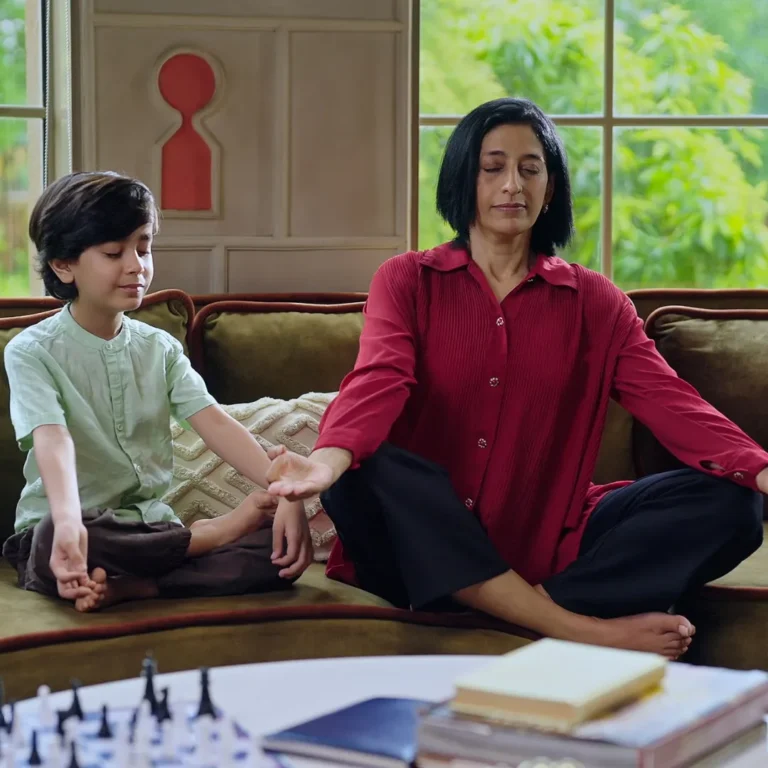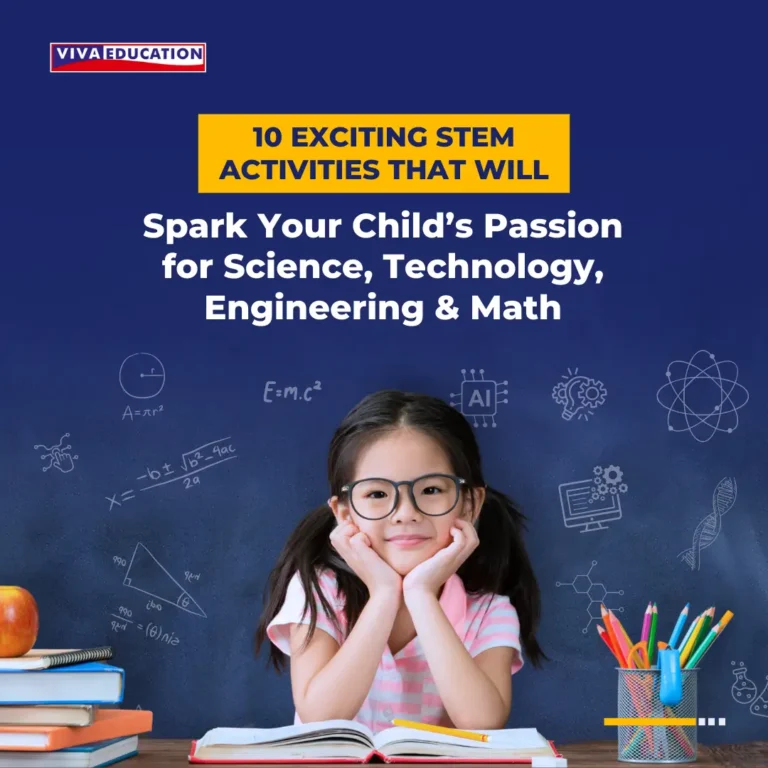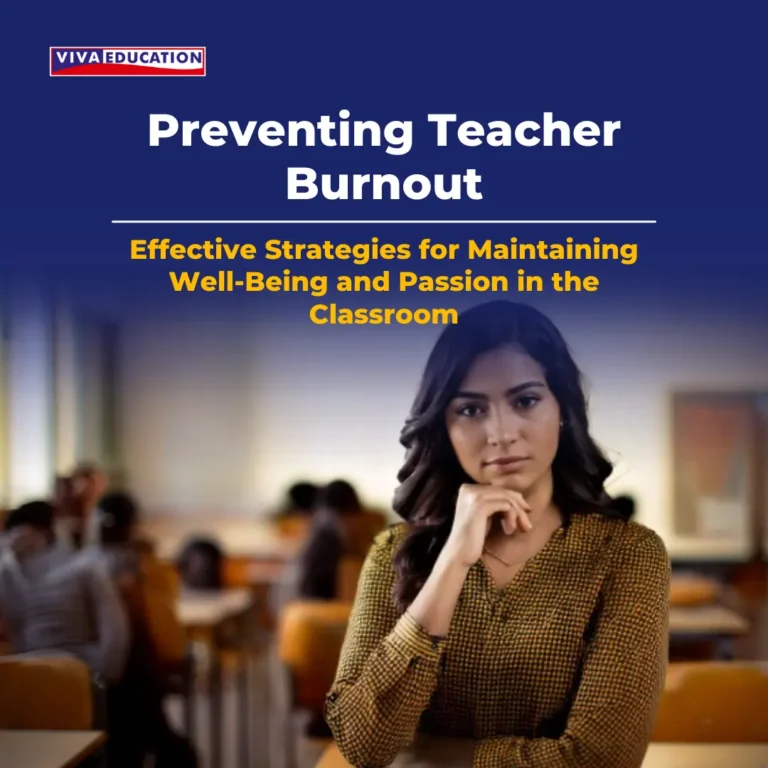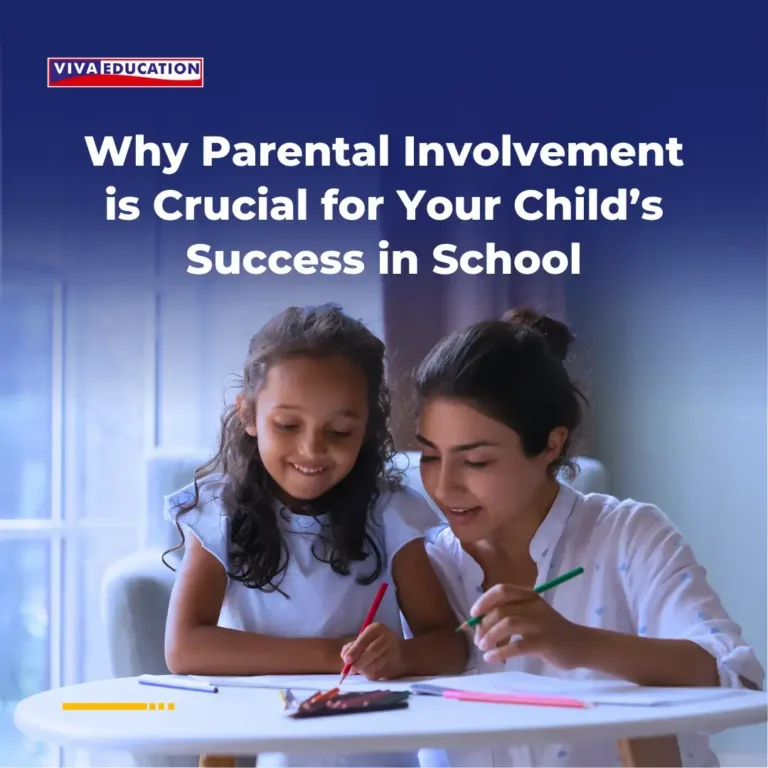Developing 21st-Century Skills Through Genius Hour: A Blueprint for Future-Ready Learners
- Parents, Teachers
- April 8, 2025
- Viva Education
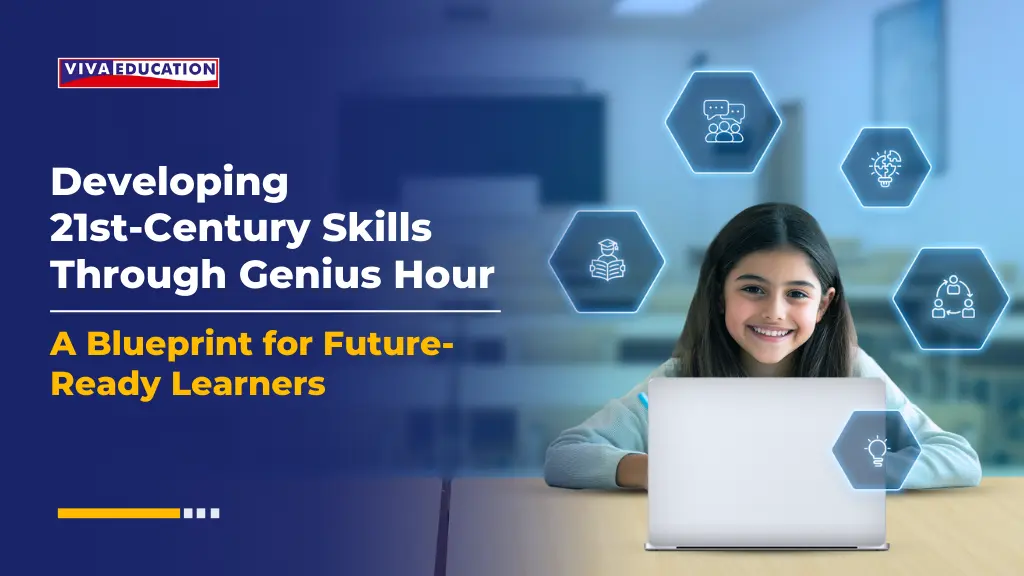
These days, more and more teachers are moving beyond traditional teaching methods and embracing creative, student-driven approaches to learning. One standout example? Genius Hour is a flexible, exciting practice that goes by many names, from Inquiry-Based Projects to Passion Projects or Student Choice Time. No matter what you call it, the heart of Genius Hour remains the same: giving students time each week to explore topics they’re genuinely curious about.
In traditional classroom settings, lessons often follow tight schedules and preset topics. This can limit students’ creativity and curiosity, which often leads to the question: How can we develop critical thinking skills in students? Genius Hour flips the script by giving them ownership and room to explore, question, and create skills that will serve them well beyond the classroom.
In this article, we’ll explore how Genius Hour supports the development of 21st-century skills, how it works, and how educators and parents alike can bring this innovative idea to life.
What Is Genius Hour for Elementary Students?
Genius Hour is an innovative, student-led learning model in which elementary students get dedicated classroom time, usually one hour a week, to explore their own passions and curiosities. Inspired by Google’s “20% Time” (where engineers worked on personal passion projects that led to inventions like Gmail and Google News), Genius Hour brings this concept into the classroom but with a more age-appropriate approach.
The idea took root in education through books like Drive by Daniel Pink and The Passion-Driven Classroom by Angela Maiers and Amy Sandoval. It’s also been championed by educators like A.J. Juliani, who has seen first-hand the excitement it sparks in students. During Genius Hour, children choose a topic that excites them, research it using reliable sources, and then create a final product, a model, video, report, or presentation to share their learning.
There’s no rigid formula, just two essential ingredients: passion and purpose. It encourages self-directed learning, boosts creativity, and fosters critical thinking and communication skills. Teachers become facilitators, not lecturers, and often discover hidden talents in their students.
What Are the Three Rules for Genius Hour?
To keep Genius Hour focused and productive, most educators follow three simple yet powerful rules:
1. Start with a Deep Question
Students begin by identifying a genuinely curious question that can’t be answered with a quick Google search. This promotes critical thinking and pushes them to think beyond surface-level facts.
For example:
Instead of “What is a computer?”, a better Genius Hour question would be “How is emerging technology like artificial intelligence (AI) changing the way we live and work?”
2. Conduct Thorough Research
Once they have their question, students explore it using reliable sources: books, interviews, academic websites, and more. This teaches them to navigate information critically and responsibly, a vital skill in today’s digital world.
3. Create and Share a Product
Students must produce something tangible that reflects their learning. It could be a slideshow, a model, a short video, a diorama, a podcast, or even a service initiative. This “product” isn’t about being perfect; it’s about expressing their understanding creatively.
Bonus: Reflection
An often overlooked but powerful component of Genius Hour is reflection. Students journal about what they learned, what challenged them, and how they grew. This metacognitive practice helps solidify learning and encourages self-awareness.
What Are the Six Phases of Genius Hour?
To bring structure to Genius Hour, many teachers follow a six-phase model. Think of it as a mini learning journey:
1. Passion
The journey begins with self-discovery. Students reflect on what truly excites them, such as topics they’re curious about, hobbies they enjoy, or issues they care about. This phase encourages them to look inward and connect with something meaningful. Whether learning how volcanoes erupt or understanding how animation works, the goal is to spark genuine interest.
2. Plan
Once a topic is chosen, students formulate a driving question to guide their research. This isn’t just “What is a volcano?” but “Why do volcanoes erupt, and how do they affect nearby communities?” They map out their learning path, identifying resources, setting goals, and listing the steps they’ll need to take. This phase builds early research and organisational skills.
3. Pitch
Students present their ideas to the teacher or classmates. This short, structured pitch explains what they want to learn, why it matters, and how they plan to explore it. The pitch stage promotes communication, self-confidence, and accountability. It also offers teachers a checkpoint to guide or refine student projects before deep research begins.
4. Project
This is the heart of Genius Hour’s active exploration. Students dive into their chosen topic through books, videos, interviews, experiments, and hands-on activities. The learning process becomes personalised and self-directed. The teacher acts as a facilitator, offering support, resources, and gentle redirection as needed.
5. Product
After weeks of research and exploration, students create something that showcases their learning. The product could be a model, a video tutorial, a comic strip, a diorama, a blog post, or even a community awareness campaign. The choice of medium is flexible and should align with the topic and the student’s strengths. This stage helps build confidence and creative expression, which is very important for innovation and creative problem-solving skills.
6. Presentation
The final step is sharing. Students present their work to an audience, whether classmates, parents, school staff, or online. This presentation phase is crucial for building public speaking skills, self-confidence, and pride in their achievements. It also turns learning into a community celebration, highlighting the value of student voice and independent inquiry.
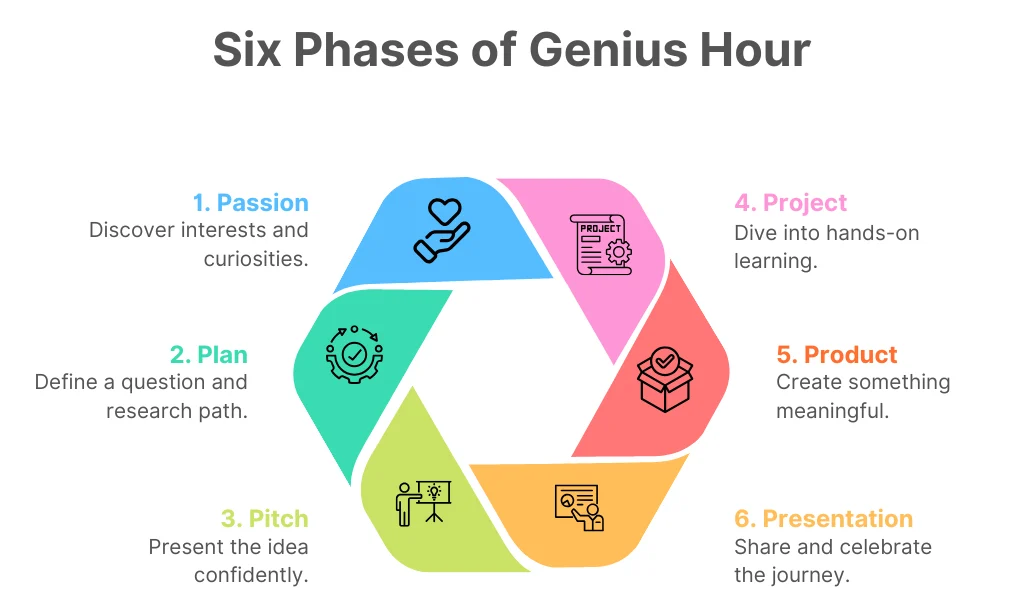
6 Key 21st-Century Skills Developed Through Genius Hour
Genius Hour doesn’t just encourage learning; it fosters the six core 21st-century skills students need to thrive:
1. Creativity
By designing their own projects, students use imagination to express their ideas uniquely. They aren’t just repeating information, they’re creating something new.
2. Critical Thinking
Formulating inquiry questions and conducting in-depth research challenges students to analyse, evaluate, and synthesise information, which is a cornerstone of critical thinking.
3. Collaboration
Many Genius Hour projects involve teamwork. Whether brainstorming ideas or building something together, students learn how to listen, share, and compromise.
4. Communication
From pitching their project to presenting their findings, students practice verbal and written communication. They learn how to express themselves clearly and confidently.
5. Problem-Solving
Projects rarely go exactly as planned. Students must adapt, troubleshoot, and find creative solutions and skills that will serve them well in any future career.
6. Self-Directed Learning
Perhaps the most critical skills Genius Hour teaches students are managing their time, staying motivated, and taking responsibility for their learning.
Which Genius Hour phase do kids enjoy most?
Genius Hour Starter Activities
Before students jump into their independent projects, it helps to spark their curiosity and get them thinking like innovators. These starter activities are designed to ease them into the mindset of inquiry, creativity, and self-direction.
1. What Would You Fix?
This classic activity gets students thinking like problem-solvers. Give each student a piece of paper and ask, “If you could fix one thing in the world, what would it be?” They jot down all the annoyances, problems, or frustrations they’ve noticed. Then, they pick one and brainstorm possible ways to fix it.
It encourages students to think critically about the world around them and helps them connect learning to real-world issues they care about. It’s a natural gateway to passion-driven inquiry.
2. Passion Web
Provide students with a large sheet of paper and markers. In the center, they write “Me,” then draw lines outward like a web to list interests, hobbies, talents, or causes they care about, such as sports, animals, music, food, helping others, etc.
It visually shows students they already have many areas they’re curious about. It also helps hesitant learners uncover hidden passions they might not realise they had.
3. Curiosity Jar
Place a large jar or box in the classroom. Ask students to write questions on paper about anything they’re curious about and drop them in. You can pull a few out daily to read aloud and discuss: “Why do cats purr?” “Who invented Wi-Fi?” “Can plastic be turned into fuel?”
It creates a culture of questioning and wonder. Students begin to see that all great projects start with a curious mind.
4. Dream Job Detective
Have students imagine their dream job, even if it doesn’t exist. Then, they research what that job involves, what skills it requires, and what kind of impact it makes. Bonus: Let them design a business card or job ad for their dream role.
It gets students thinking about their future and connects their personal interests to real-world possibilities. It also opens the door to Genius Hour project ideas rooted in career exploration.
5. What If…? Challenge
Pose a few bold, imaginative “what if” questions to the class: “What if humans could live underwater?”, “What if schools had no grades?”, “What if you had unlimited money to help your community?” Students then pick one question and write or draw their responses.
It unleashes creativity and encourages students to think beyond what is and explore what could be. These open-ended questions often lead to deep inquiry and meaningful project topics.
Implementing Genius Hour: A How-To for Educators and Parents
For Educators
Here’s how you can bring Genius Hour into your classroom:
- Dedicate 60 minutes a week to Genius Hour. Block out a consistent weekly time so students can look forward to it.
- Provide digital tools and research materials access to books, websites, tablets, and creative supplies can enhance the experience
- Use prompts to spark curiosity. Encourage students to use “I wonder…” statements:
“I wonder how astronauts prepare for space travel?”
“I wonder what causes animals to go extinct?” - Encourage collaboration; pair students up or let them bounce ideas off each other
- Showcase the projects. Whether it’s a bulletin board, a classroom presentation, or a video, celebrating student work motivates everyone.
Tip: Start small. Try one Genius Hour cycle with just a few students or topics before scaling up.
For Parents
Parents can nurture 21st-century skills at home with a mini-version of Genius Hour:
- Set a weekly “exploration time.” Choose a regular time for your child to dive into a passion project
- Ask curiosity-driven questions like “What’s something you wish you knew how to do?” or “If you could invent anything, what would it be
- Provide books, kits, and tools that align with their interests.
- Encourage reflection. Have them keep a journal or talk through what they’re learning during dinner or bedtime.
Why Genius Hour Matters More Than Ever
The world kids will grow up in is transforming every second. Many jobs they’ll do in the future don’t even exist. So how do we prepare them? We help them build the skills that will always matter, like thinking critically, solving problems, being creative, and working well with others.
That’s where Genius Hour comes in. It gives students time to explore something they’re truly curious about while also learning how to ask good questions, do meaningful research, and share what they’ve discovered in their own way.
Whether you’re a teacher wanting to make learning more engaging or a parent hoping to spark your child’s curiosity, Genius Hour is a powerful way to help kids become confident, independent learners ready for whatever the future brings.
When we hand the learning reins to children, they do more than engage; they shine.
Frequently Asked Questions:
1. What is Genius Hour in education?
Genius Hour is a student-led learning approach where kids get dedicated time to explore a passion or question through project-based learning.
2. What age group is Genius Hour best suited for?
Genius Hour works well for elementary and middle school students, but it can be adapted for any grade.
3. What kind of projects do students create in Genius Hour?
Projects can be videos, models, presentations, posters, experiments, blogs, or anything that shows what they learned.
4. How do parents support Genius Hour at home?
By offering time, simple resources, and encouragement, and asking curiosity-based questions.
5. What are common challenges in Genius Hour?
Students may struggle with time management or choosing a topic, but teacher guidance and planning tools help.
6. What are the three rules of Genius Hour?
Ask a deep question, do real research, and create a product to share.
7. What skills do kids gain from Genius Hour?
Creativity, critical thinking, collaboration, communication, problem-solving, and independence.
8. Why is Genius Hour important for future-ready learners?
It prepares students for a fast-changing world by teaching them how to learn, adapt, innovate, and take initiative.
>> Please Share
